Instruction
How to hit a bunker shot, as analyzed on Trackman
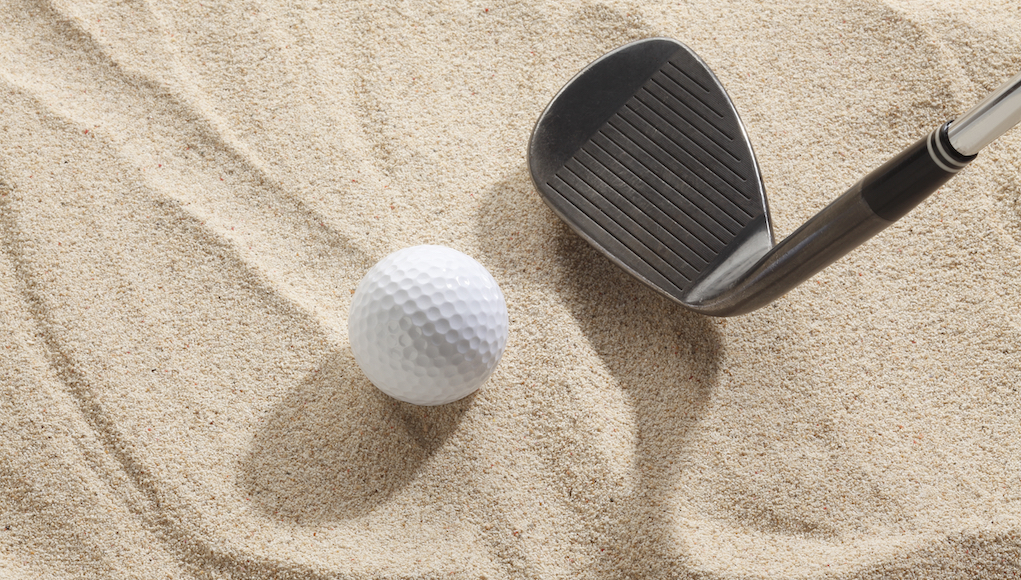
Trackman is a wonderful tool for teaching and fitting golf clubs, but it can also help golfers understand how certain golf shots actually happen. Recently, I took Trackman and a video camera out to a practice bunker to see the numbers and swing positions on a standard bunker shot.
Below, I’ve also compiled a checklist of five keys to hitting better bunker shots and increasing your sand save-percentage. The screenshots below are all from one shot on Trackman, just in different stages of the swing, and the numbers reflect only impact conditions.
At address, my spine is centered and I’m leaning my weight on the front foot (toward the target), which helps me to control my low point through impact. While I do think your feet should be slightly open to the target, I’m not a huge advocate of setting your feet up wide open, or lined up well left for right-handed golfers. It complicates the process, especially for those who struggle out of sand traps. Therefore, you’ll see my body is slightly left of the target line (the white line) and the club face is a touch open.
News flash: I’m not perfect! I’ve never opened the face as much as others, so I tend to pull most of my bunker shots (you can see now why I don’t aim very far left of the target). However, you can see in the screenshots that my face stays at the same angle from address to impact. Therefore, a quick fix for the pull would be to merely open my face more at address and make the same swing.
Problem solved!
On a positive note, since my setup is slightly left of the target, the golf club is moving up and away during the backswing and “staying outside of my hands.” This is what you want to see for a bunker shot.
As we move to the top of my backswing in Image 2 (left), you can see how the club has stayed in front of my body, which will help the club to move out-to-in through impact — this is a good thing. The butt of the club is pointing between the ball and my toes, showing me the backswing has been more vertical to the top and less around. For a sand shot, that’s also a positive.
Many players get into trouble at this juncture when the shaft lays, or flattens, and the butt end points at the ball. This means you are too shallow, and will lead to inconsistent contact, especially out of the bunker.
At impact (Image 2, right), you’ll see that the path (blue line) was moving out to in at -8.6 degrees, while the face was 6.6 degrees right of the path but -2.0 left of the target, causing a slight pull. What I do like to see, however, is the angle of attack at -5.6 degrees or more giving me a chance to “go down and after” the ball at impact. Too often people come into the ball too shallow when they’re hitting bunker shots, which leads to both thin and fat shots.
Note: Don’t “back up” on the ball, or be afraid to hit the sand. The sand is your friend in the bunker, so make sure to hit down and through it.
After impact, all I try to do is stay forward and make a full finish with my right shoulder. The only way I can foul things up is to fall back and slow down. Whenever this happens, I will move my low point backward and hit the ball fat and thin. I feel that if my right shoulder keeps moving the hands, then the club can’t slow down through impact.
Follow these tips for more success out of the bunkers:
- Set up with your spine centered and your weight toward the target
- Your body should be slightly open to your target with your clubface pointing down your target line (more so than mine).
- The club should move up and away during the backswing, following the lines of your body, while the wrists hinge to the top, keeping the butt of the club between the ball and your toes
- Keep everything moving forward! From the top, make sure to keep your weight toward the target, and hit down and through the shot without “backing up” on it. This will help you keep your angle of attack steep enough to get under the ball, and your low point consistent
- To finish the swing, keep your right shoulder moving to a full finish; stalling out is a death move.
- LIKE68
- LEGIT18
- WOW4
- LOL1
- IDHT1
- FLOP12
- OB4
- SHANK40
Instruction
The Wedge Guy: The easiest-to-learn golf basic

My golf learning began with this simple fact – if you don’t have a fundamentally sound hold on the golf club, it is practically impossible for your body to execute a fundamentally sound golf swing. I’m still a big believer that the golf swing is much easier to execute if you begin with the proper hold on the club.
As you might imagine, I come into contact with hundreds of golfers of all skill levels. And it is very rare to see a good player with a bad hold on the golf club. There are some exceptions, for sure, but they are very few and very far between, and they typically have beat so many balls with their poor grip that they’ve found a way to work around it.
The reality of biophysics is that the body moves only in certain ways – and the particulars of the way you hold the golf club can totally prevent a sound swing motion that allows the club to release properly through the impact zone. The wonderful thing is that anyone can learn how to put a fundamentally sound hold on the golf club, and you can practice it anywhere your hands are not otherwise engaged, like watching TV or just sitting and relaxing.
Whether you prefer an overlap, interlock or full-finger (not baseball!) grip on the club, the same fundamentals apply. Here are the major grip faults I see most often, in the order of the frequency:
Mis-aligned hands
By this I mean that the palms of the two hands are not parallel to each other. Too many golfers have a weak left hand and strong right, or vice versa. The easiest way to learn how to hold the club with your palms aligned properly is to grip a plain wooden ruler or yardstick. It forces the hands to align properly and shows you how that feels. If you grip and re-grip a yardstick several times, then grip a club, you’ll see that the learning curve is almost immediate.
The position of the grip in the upper/left hand
I also observe many golfers who have the butt of the grip too far into the heel pad of the upper hand (the left hand for right-handed players). It’s amazing how much easier it is to release the club through the ball if even 1/4-1/2″ of the butt is beyond the left heel pad. Try this yourself to see what I mean. Swing the club freely with just your left hand and notice the difference in its release from when you hold it at the end of the grip, versus gripping down even a half inch.
To help you really understand how this works, go to the range and hit shots with your five-iron gripped down a full inch to make the club the same length as your seven-iron. You will probably see an amazing shot shape difference, and likely not see as much distance loss as you would expect.
Too much lower (right) hand on the club
It seems like almost all golfers of 8-10 handicap or higher have the club too far into the palm of the lower hand, because that feels “good” if you are trying to control the path of the clubhead to the ball. But the golf swing is not an effort to hit at the ball – it is a swing of the club. The proper hold on the club has the grip underneath the pad at the base of the fingers. This will likely feel “weak” to you — like you cannot control the club like that. EXACTLY. You should not be trying to control the club with your lower/master hand.
Gripping too tightly
Nearly all golfers hold the club too tightly, which tenses up the forearms and prevents a proper release of the club through impact. In order for the club to move back and through properly, you must feel that the club is controlled by the last three fingers of the upper hand, and the middle two fingers of the lower hand. If you engage your thumbs and forefingers in “holding” the club, the result will almost always be a grip that is too tight. Try this for yourself. Hold the club in your upper hand only, and squeeze firmly with just the last three fingers, with the forefinger and thumb off the club entirely. You have good control, but your forearms are not tense. Then begin to squeeze down with your thumb and forefinger and observe the tensing of the entire forearm. This is the way we are made, so the key to preventing tenseness in the arms is to hold the club very lightly with the “pinchers” — the thumbs and forefingers.
So, those are what I believe are the four fundamentals of a good grip. Anyone can learn them in their home or office very quickly. There is no easier way to improve your ball striking consistency and add distance than giving more attention to the way you hold the golf club.
More from the Wedge Guy
- The Wedge Guy: Golf mastery begins with your wedge game
- The Wedge Guy: Why golf is 20 times harder than brain surgery
- The Wedge Guy: Musings on the golf ball rollback
- LIKE83
- LEGIT13
- WOW5
- LOL1
- IDHT0
- FLOP4
- OB1
- SHANK8
Instruction
Clement: Stop ripping off your swing with this drill!

Not the dreaded headcover under the armpit drill! As if your body is defective and can’t function by itself! Have you seen how incredible the human machine is with all the incredible feats of agility all kinds of athletes are accomplishing? You think your body is so defective (the good Lord is laughing his head off at you) that it needs a headcover tucked under the armpit so you can swing like T-Rex?
- LIKE0
- LEGIT2
- WOW2
- LOL0
- IDHT0
- FLOP0
- OB0
- SHANK2
Instruction
How a towel can fix your golf swing

This is a classic drill that has been used for decades. However, the world of marketed training aids has grown so much during that time that this simple practice has been virtually forgotten. Because why teach people how to play golf using everyday items when you can create and sell a product that reinforces the same thing? Nevertheless, I am here to give you helpful advice without running to the nearest Edwin Watts or adding something to your Amazon cart.
For the “scoring clubs,” having a solid connection between the arms and body during the swing, especially through impact, is paramount to creating long-lasting consistency. And keeping that connection throughout the swing helps rotate the shoulders more to generate more power to help you hit it farther. So, how does this drill work, and what will your game benefit from it? Well, let’s get into it.
Setup
You can use this for basic chip shots up to complete swings. I use this with every club in my bag, up to a 9 or 8-iron. It’s natural to create incrementally more separation between the arms and body as you progress up the set. So doing this with a high iron or a wood is not recommended.
While you set up to hit a ball, simply tuck the towel underneath both armpits. The length of the towel will determine how tight it will be across your chest but don’t make it so loose that it gets in the way of your vision. After both sides are tucked, make some focused swings, keeping both arms firmly connected to the body during the backswing and follow through. (Note: It’s normal to lose connection on your lead arm during your finishing pose.) When you’re ready, put a ball in the way of those swings and get to work.

Get a Better Shoulder Turn
Many of us struggle to have proper shoulder rotation in our golf swing, especially during long layoffs. Making a swing that is all arms and no shoulders is a surefire way to have less control with wedges and less distance with full swings. Notice how I can get in a similar-looking position in both 60° wedge photos. However, one is weak and uncontrollable, while the other is strong and connected. One allows me to use my larger muscles to create my swing, and one doesn’t. The follow-through is another critical point where having a good connection, as well as solid shoulder rotation, is a must. This drill is great for those who tend to have a “chicken wing” form in their lead arm, which happens when it becomes separated from the body through impact.
In full swings, getting your shoulders to rotate in your golf swing is a great way to reinforce proper weight distribution. If your swing is all arms, it’s much harder to get your weight to naturally shift to the inside part of your trail foot in the backswing. Sure, you could make the mistake of “sliding” to get weight on your back foot, but that doesn’t fix the issue. You must turn into your trial leg to generate power. Additionally, look at the difference in separation between my hands and my head in the 8-iron examples. The green picture has more separation and has my hands lower. This will help me lessen my angle of attack and make it easier to hit the inside part of the golf ball, rather than the over-the-top move that the other picture produces.


Stay Better Connected in the Backswing
When you don’t keep everything in your upper body working as one, getting to a good spot at the top of your swing is very hard to do. It would take impeccable timing along with great hand-eye coordination to hit quality shots with any sort of regularity if the arms are working separately from the body.
Notice in the red pictures of both my 60-degree wedge and 8-iron how high my hands are and the fact you can clearly see my shoulder through the gap in my arms. That has happened because the right arm, just above my elbow, has become totally disconnected from my body. That separation causes me to lift my hands as well as lose some of the extension in my left arm. This has been corrected in the green pictures by using this drill to reinforce that connection. It will also make you focus on keeping the lead arm close to your body as well. Because the moment either one loses that relationship, the towel falls.


Conclusion
I have been diligent this year in finding a few drills that target some of the issues that plague my golf game; either by simply forgetting fundamental things or by coming to terms with the faults that have bitten me my whole career. I have found that having a few drills to fall back on to reinforce certain feelings helps me find my game a little easier, and the “towel drill” is most definitely one of them.
- LIKE12
- LEGIT2
- WOW2
- LOL0
- IDHT0
- FLOP2
- OB0
- SHANK8
-

 19th Hole2 weeks ago
19th Hole2 weeks agoJohn Daly stuns fans into silence with brutal opening tee shot on PGA Tour Champions
-

 19th Hole1 week ago
19th Hole1 week agoThings got heated at the Houston Open between Tony Finau and Alejandro Tosti. Here’s why
-

 19th Hole6 days ago
19th Hole6 days agoReport: Tiger Woods has ‘eliminated sex’ in preparation for the 2024 Masters
-

 19th Hole3 weeks ago
19th Hole3 weeks ago2-time major champ announces shock retirement from the sport at age of 33
-

 19th Hole23 hours ago
19th Hole23 hours agoTiger Woods arrives at 2024 Masters equipped with a putter that may surprise you
-

 19th Hole3 weeks ago
19th Hole3 weeks agoEdoardo Molinari reveals the latest PGA Tour golfer to turn down ‘good offer’ from LIV Golf
-

 19th Hole2 weeks ago
19th Hole2 weeks agoCharlie Woods finds it tough going on American Junior Golf Association debut
-

 19th Hole1 week ago
19th Hole1 week agoAddiction, spinal fusion, and scam artists – Everything Anthony Kim revealed in candid interview with David Feherty

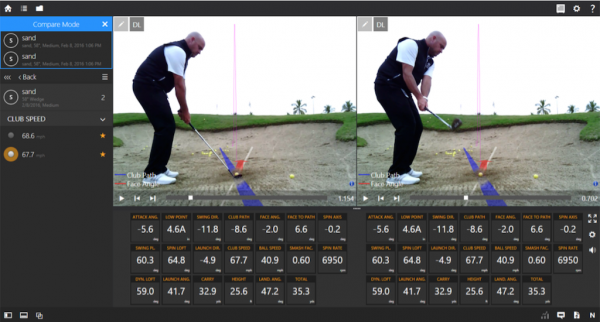
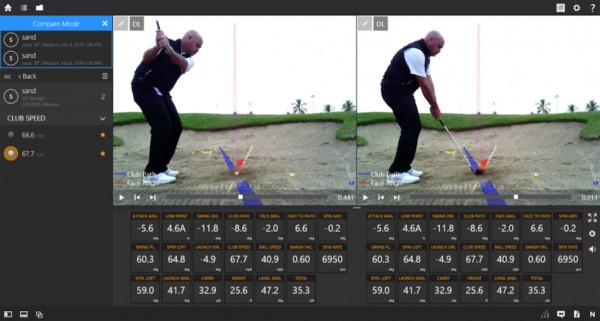
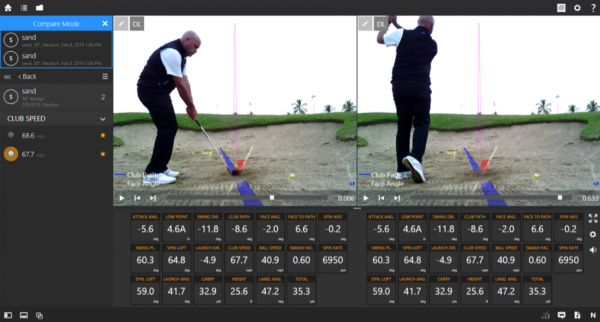










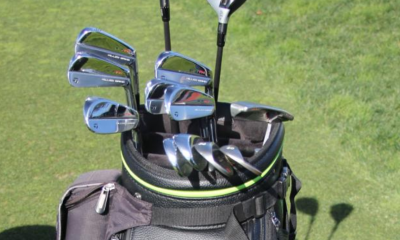

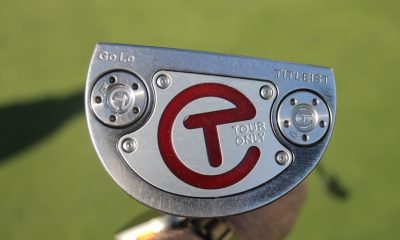

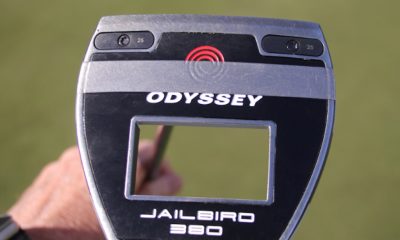

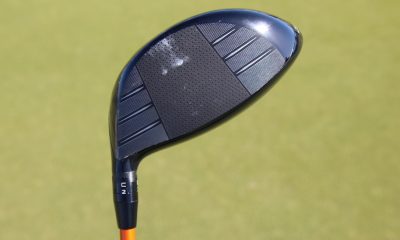

dan
Oct 10, 2016 at 12:53 pm
The problem with this is the way you’ve drawn the blue line. It “implies” that you’re cutting across your foot line which you actually aren’t supposed to do or are you actually doing. You’re blue line is aimed about 25-30 degrees left of the target but your actual swing was only 8.6 degrees left of the target. Drawing the line this way actually can confuse a lot of people or get them to believe that they have to take the club back outside the foot line and cut across the ball. Good bunker players still swing from the inside of their foot line but it just appears like they’re cutting across the target line because they are aimed left.
steve
Mar 13, 2016 at 8:47 am
This guy and trackman, ugg
Troy
Mar 12, 2016 at 5:03 pm
It’s interesting all previous advice I’d read about years ago was always about having a wide open stance and wide open clubface.
However, more recent instruction seems to advise a square stance and less of an open clubface.
I imagine both techniques work but it does confuse the issue for a lot of golfers, especially given this is an area of the game that most weekend golfers struggle with.
come on
Mar 11, 2016 at 11:14 pm
all the same stuff you would learn without trackman…
tom stickney
Mar 12, 2016 at 7:41 pm
Just a fun article to see what TM would say…nothing new but kind of fun for the tech guys to see the numbers.
Craig
Mar 11, 2016 at 2:49 pm
Tom,
I appreciate reading your articles. I like the stats and how you use them to explain things on interest. It’d be cool you see a motion video of you sand shot. Great job and keep up the articles. Some of my favorites… 🙂
cmyktaylor
Mar 11, 2016 at 1:13 pm
No